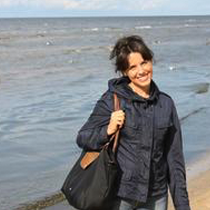Project Awarded: $28,350
Attributing moral responsibility for actions involves establishing the causal relationship between events. However, it also involves making inferences about people’s mental states, including their intentions, desires, and knowledge about the world. This is reflected both in folk psychological conceptions of moral responsibility, and among some normative ethical theories, such as intent-based versions of utilitarianism (Adams 1976). Inferences about individual mental states have been shown to be the most relevant factor when people judge an act to be wrong or permissible, but assigning blame or responsibility for the outcome also depends on a perceived causal link between the agent and the outcome (Cushman 2008). Intentionality judgments also rely on the valence and value of an action’s outcome, the objective probability of an action’s having a desired effect, and the agent’s subjective probability of the action having its effect (Knobe 2003; Feltz 2007; Mele & Cushman 2007). Causal judgments thus clearly affect attributions of moral responsibility. However, it remains unclear how sensitive people are to differences in the causal structure of events with morally relevant content and how intentionality ascriptions emerge from observations (or descriptions) of behaviour, in particular when explicit information about an agent’s intentions is not available. It further remains to be seen to which features of a set of events people preferentially attend when making moral judgments. To clarify these important issues, we propose a series of experiments that will all bear on one overarching question: “What is the mental structure of responsibility attributions?” More specifically, we intend to answer two questions (with some sub-questions) in the realm of descriptive moral psychology:
1. How sensitive are people to differences in the causal structure of a given causal chain in making cued judgments of intentionality and responsibility?
a. How dissociable are intentionality and responsibility judgments under conditions of different background causal chains in the absence of explicit intentionality information?
b. Do causal structure differences between action and non-action (omission) engage differential activation of motor representation regions and does this activation inform responsibility judgment behavior directly, or is this influence mediated by intentionality computations?
c. What role do counterfactual representations of the contrastive set of unrealized events play in facilitating intentionality responsibility judgments?
2. What is the latent structure of event/agent features to which people attend when evaluating actions without being explicitly cued to respond to one feature or another?
Experimentally, these questions will be answered by asking study participants to react to vignettes involving interactions between agents that result in morally relevant outcomes. The first set of experiments will involve using vignettes with maximally similar cover stories while varying the causal structure of the action (i.e. action or omission and preemptive or direct causality). The second set of experiments will involve using vignettes based on real episodic memories from prior research participants. In summary, the first experimental set is expected to clarify to what extent intention and responsibility judgments are subject to influence by the background structure of causal relations in the world. The second experimental set will further clarify the latent structure underlying folk psychological conceptions of moral responsibility by using data reduction techniques.
Team members:



